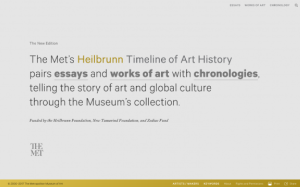 |
June 2, 2017 Volume 23, Number 22 |
Research and Education |
General Interest |
Network Tools |
In the News |
Research and EducationBack to Top | |
 |
|
 |
|
 |
|
 |
|
 |
|
 |
|
 |
|
 |
|
General InterestBack to Top | |
 |
|
 |
|
 |
|
 |
|
 |
|
 |
|
 |
|
Network ToolsBack to Top | |
 |
|
 |
|
In the NewsBack to Top | |
291 Youth Compete in Scripps National Spelling Bee | |
|
Spellers are preparing for 90th annual Scripps National Spelling Bee How quaint 18th-century 'spellfights' evolved into the Scripps National Spelling Bee Scripps National Spelling Bee What Makes the Spelling Bee So Hard Is Wisconsin Really That Hard to Spell? Annenberg Learner: Interactives: Spelling Bee Between May 30 - June 1, 2017, over 291 students will gather in Oxon Hill, Maryland to compete in the 90th annual Scripps National Spelling Bee. This annual competition is open to students who are under 15 and have not yet completed the eighth grade. (Of note: this year's bee features the youngest participant in history, six-year-old Edith Fuller of Tulsa, Oklahoma.) These students have emerged victorious from a series of spelling bees, most of which started in their classrooms. In fact, no fewer than 11 million students total participated in these spelling bees this year. According to James Maguire, author of American Bee: The National Spelling Bee and Culture of Word Nerds, spelling bees played an important role throughout U.S. history. In colonial America, Puritans used the activity to teach children to read and write. Spelling bees (alternatively referred to as "spelling combats," "spell fights," and "spell downs") soon emerged as a popular form of entertainment in the eighteenth and nineteenth centuries. In 1925, the Kentucky Courier Journal sponsored the first national spelling bee, initiating an annual tradition that continues to this day. [MMB] The first link takes readers to an overview of this year's spelling bee, courtesy of ABC News. Next, readers interested in learning more about the history of the American spelling bee will want to check out this article by Jeva Lange of This Week. In addition, the official Scripps National Spelling Bee homepage contains quite a bit of historical information about the contest. One highlight of this page is a complete timeline that features the winning word (and winning speller) for each year. This website also allows visitors to test out their own spelling prowess via an interactive test. Moving along, spelling bee fans may be interested in this analysis from FiveThirtyEight's Oliver Roeder. By examining data from previous spelling Bees, Roeder identifies the factors that make certain English words especially difficult to spell. Speaking of hard-to-spell words, Google Analytics released a widely shared map of the words that individuals in each U.S. state are mostly likely to turn to the search engine for help spelling. The fifth link takes readers to The New York Times's Christopher Mele's musings about this map. Finally, K-12 educators interested in introducing spelling into their own classrooms will want to check out the final link, an interactive from Annenberg Learner that facilitates student spelling and reading practice. | |





